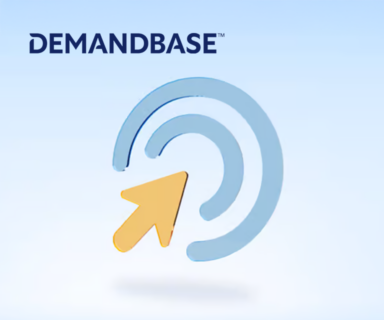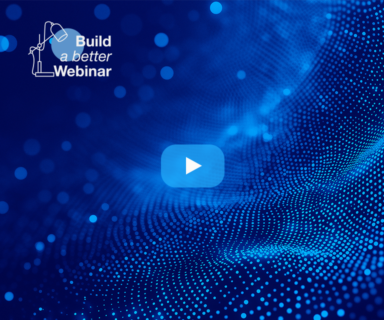 2018 felt like a year of fits and starts around issues like GDPR, data integration, systems automation, marketing attribution and more. The silver lining is that the hard work is starting to pay off. Based on customer interactions I had in the last half of 2018, I believe B2B marketers and sales pros are poised to make a huge leap forward in 2019 in how they apply intent data to everyday goals such as prospect discovery, qualification, and opportunity creation. Here are 5 reasons why:
2018 felt like a year of fits and starts around issues like GDPR, data integration, systems automation, marketing attribution and more. The silver lining is that the hard work is starting to pay off. Based on customer interactions I had in the last half of 2018, I believe B2B marketers and sales pros are poised to make a huge leap forward in 2019 in how they apply intent data to everyday goals such as prospect discovery, qualification, and opportunity creation. Here are 5 reasons why:
#1 – GDPR one year after was addition by subtraction
Everybody likes a good cleanse to start the new year. GDPR was a royal pain and for many; it still is. I talked to one European tech provider who said he “lost” 70% of his database to GDPR. That’s on the high end but unfortunately, it’s not far off from what many customers said.
But I wouldn’t call the impact of GDPR a “loss” so much as “addition by subtraction,” like pruning back the underbrush in your garden to accelerate growth. Ultimately, the great database cleanse of 2018 will yield a step-up in email conversions and efficiency in 2019.
The effort behind GDPR put us in a much better place to handle upcoming privacy regulations like the California Consumer Privacy Act and others that will surely follow. Moreover, consider that those “lost” contacts wouldn’t have converted well anyway. And now you don’t have to waste time contacting them.
#2 – Systems are streamlined and so are processes
2017 and 2018 were years of data and tech experimentation, marked by pilots and betas with lots of single-point solutions. We spent lots of time learning how to manage data, standardize records, score contacts, carry through attribution, automate workflows and use prospect interests to drive better personalization and response. While our work is far from finished, 2019 will be a year of full-scale production against these issues.
The lesson for the new year is that better systems and workflows won’t alleviate the need for sound marketing and sales practices. We will always need to pay close attention to our audience, content, offer, and outreach. The difference in 2019 is that our tech stack and data workflow will underpin those practices rather than draw our focus away from them.
#3 – Sales teams are more comfortable in a data-enabled world
When it comes to data-driven marketing and sales, most companies have made faster progress in marketing automation than in sales orchestration. 2019 will be the year that sales catches up.
Getting sales to be data-driven is as much about changing old habits as it is about new data types or systems integration. Let’s face it, it’s just easier to call inbound leads, which is why sales always asks for more of them. But 2018 taught us that sales teams that break those old habits and embrace a new way of selling—using intent signals beyond direct engagement—put themselves in a much better position to win.
From our side, in 2018 we saw rapid growth in the use of Priority Engine, TechTarget’s purchase intent data platform, to fuel inside sales efforts. More and more of our customers’ sales teams used the insights we provide into prospect interests, research focus, vendor considerations, and tech installs. Using this data, leading sales teams saw an increase in opportunity conversion by 4x or more. In 2019, I expect this trend to continue.
#4 – Coordinated, multi-channel marketing is no longer a pipe dream
In 2018 there was a lot of talk about building a “golden record”—a single database of cleansed account and contact records to fuel multi-channel digital outreach. We continue to make steady progress toward that goal—GDPR helped—but there’s still a lot of work ahead in how we use that cleaned up database for marketing and sales.
The core challenge is that most marketing and sales platforms don’t talk to each other. For example, while MAPs and DSPs both saw advancements last year in how they optimize campaigns based on account reach and response, many email and ad systems aren’t coordinated on the effort. Since they have no way to handle conflicting signals, one system may be dialing back while the other is ramping up.
In 2019, we’ll see more glue applied to the cracks between email, social platforms, and digital ad servers. Knowing how important this will be, we focused our Winter Priority Engine release around this very goal. If you’re running both TechTarget lead generation and digital ad targeting campaigns alongside your subscription, we’ll continuously share info across all three platforms to ensure you are engaging the newest, most relevant buyers in your TAM with the right balance of reach and repetition. So for example, if key accounts haven’t engaged with your content via email, we’ll dial up banner targeting, and vice versa. In early campaigns, we’ve seen an increase of 30–40% in unique account engagement using this approach.
#5 – Practical outcomes are the priority
And finally, all of the above will help us double down on what’s most important this year and every year: practical outcomes. I predict 2019 will be the coming out party for the use of intent data. We’ll go from “early wins” to “sustained success” in using purchase intent for everyday marketing and sales activities: ranking which accounts to go after, recruiting active prospects to events, prioritizing accounts in rep territories, supporting alliance partners, knowing how to grab a prospect’s attention in the first few seconds of a call, and more.
In 2019, intent and behavioral data will be inextricably tied to the systems and processes through which we go after these initiatives. We’ll learn what works, adjust faster, and drive more real-world results like better conversion rates, more meetings, more shortlists and more pipeline.
If 2018 was a year of complexity and fits and starts, 2019 will show us why it was worth it.




